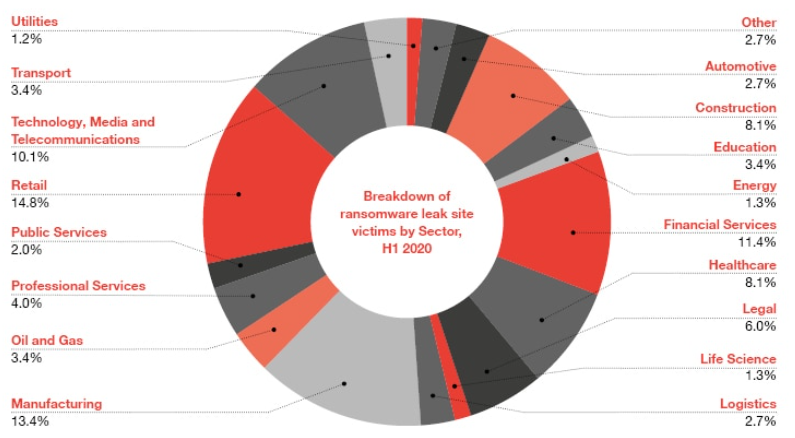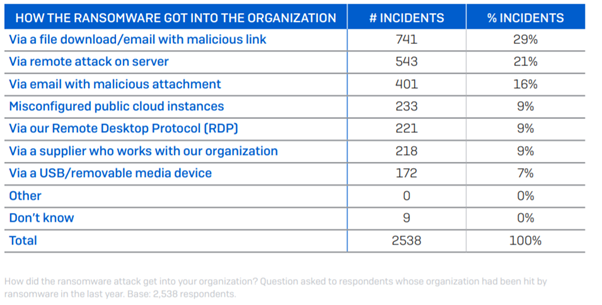Ransomware Prevention – Why Web Security Is Important?
The COVID-19 pandemic has forced many organizations to rapidly shift to remote working arrangements. They concentrate their effort on digital tool deployments to ensure seamless remote collaboration. This often means that they shifted their focus away from web security. As a result, the cybercriminals have taken the advantage of expanded attack surfaces, which have accompanied with work anywhere and exploited a larger number of weakly protected systems and amplified security issues.
Among the cybersecurity incidents, the major being ransomware attacks. According to 2022 edition of DBIR, there was a 13% rise in the ransomware attacks in the last 12 months. Undoubtedly this attack will continue to increase until organizations get serious about their web security and ransomware prevention.
What is a Ransomware Attack?
Ransomware is a kind of malware, which locks the victim’s files, device, or system holding this information until the ransom is paid. It involves encrypting files on the target system, blocking access, and threatening to erase the critical files. It demands the victim to pay the ransom before the encrypted files are unlocked. This attack can be dangerous particularly when it attacks emergency call centers, hospitals, and other critical infrastructure.
The worst-case in this attack is though some victims accept to make the payment, there is no guarantee the attacker will unlock the files or computer.
How Serious Is A Ransomware Attack?
Cybersecurity experts stated that ransomware attacks have surged 40% globally, a total of 199.7 million incidents were reported in Q3 of 2020. Up-front ransom payment is the headline cost, but it is not the only way it affects the targeted organization.
In 2020, there was a huge surge in cyberattacks compared to previous years because of new security challenges carried out by the Covid-19 outbreak. Though there have been various major cyberattacks reported, initial access to the web server is established before such incidents are identified by the victim enterprises.
Analysis of the PWC team highlighted that the recent security breaches have also raised at a time when ransomware attacks are increasingly forming leak sites to publish stolen data.

Image Source: PWC
In December 2020, the attacker who initiated the Sodinokibi ransomware stole data from victim networks, then posted a link to access the stolen data on a web forum. At the beginning of 2020, the cyber criminals controlling Maze ransomware went one step further and launched a semi-public site to post stolen data. This could cost businesses money if their trade secrets are exposed. Further, ransomware attacks can cause deadly hazards for businesses, which might never be recovered from the dangers caused by both direct and indirect costs of this attack.
Few indirect costs of the ransomware attacks are:
- Reputation Loss
- Collateral Damage
- Liability
- Enforced downtime
- Data Loss
Top Reasons for Successful Ransomware Attacks
The cybercriminals could consider security risks in a website as a goldmine to penetrate the company’s operations. They could even damage the vital resource on your website – making you start from the ground. Ransomware attacks can occur when businesses fail to follow basic web security policies and frameworks. Here are the security risks which forms the reason for the success of the ransomware attacks:
1. Web Attacks Open Back Doors for A Ransomware Attack
Most of today’s ransomware attacks depend on social engineering attacks and tricking users into clicking malicious links – commonly known as phishing attacks. Web attacks are not only in the form which may lead to a compromise in security, they’re one of the most common methods that increase the opportunity for phishing and malware.
In 2020, most of the ransomware attacks took the form of COVID-19 themed emails, which resulted in malware downloads.
Hackers are using a wide range of techniques to find the weakest spots and this is how they get in. The table below depicts the result of the Sophos survey on how the ransomware threat actors got into the organizations they surveyed.

Source: Sophos
These data show the importance of web security and the need for an effective defense strategy that covers the servers, endpoints, cloud instances, network gateway, email, and supply chain.
2. Unpatched Software
Software vulnerabilities are one of the most common ransomware delivery approaches. The unpatched software lays out a welcome mat for attackers to access the network without having to steal credentials. Once an attacker gets into the system, he begins to view or exfiltrate sensitive data by hacking key programs. Moreover, many sorts of ransomware have become more sophisticated and difficult to detect – extending their staying time for extreme destruction.
3. No Regular Backups
Another reason that proves the importance of web security to avoid ransomware. Once ransomware is in your system, you might have the option to restore critical data, if you follow regular backups. Unfortunately, the recent spike in the success of the ransomware attack highlights that most of the businesses are not paying attention to their web security and there were no proper backups to restore. Organizations who didn’t backup their data at regular intervals either have to pay the ransom or lose the data.
4. Exploit Kits
The most threatening way that ransomware threat enters your network. The exploit kits are an all-in-one platform that includes a collection of malicious code and malware, which helps threat actors to carry out cyberattacks. This kit supports hackers to target victims through existing web security gaps from recognized hardware and software in popular manufacturers.
5. Antivirus Problems
Does antivirus protect against Ransomware? – Installing anti-virus is often referred to as the best protection for ransomware. Organizations either didn’t notice or won’t be taking the warning messages from antivirus seriously. In some cases, some servers didn’t have any antivirus software installed. This can contribute to the spread of malware and successful exploits of ransomware within corporates.
6. Piracy Indulgence
Probably this is the root cause for all the security risks of a website. Had the organization been installed official software, they would have received timely updates which could have shielded their web servers and data against Petya or WannaCry and other impacts of the ransomware attacks. Unfortunately, some of the enterprises prefer to use pirated software which in turn causes serious hazards to their economy and reputation.
All these factors collectively convey one thing – it is crucial to understand the importance of web security, and proactive prevention is the best ransomware protection. Malware infections can be harmful to organizations and recovery may remain a challenging process.
Best Practices for Ransomware Prevention
Before the next-gen of more sophisticated ransomware threats evolves, every organization should deploy the front-line of defense which accompanies the web security best practices. Here are our recommendations on the best ransomware protection.
- Use heuristic detection – depending only on signature-based vulnerability detection systems are not adequate to defend from zero-day attacks. You should rely on a heuristic web application scanner or manual pen-testing. Set anti-malware and anti-virus programs to perform regular security scans automatically.
- Implement security training programs – your end-users and employees should be aware of the ransomware threat and how it is launched.
- Scan all emails – Scan both the incoming and outgoing emails to filter out executable files from reaching your web servers
- Configure WAF – Configure Web Application Firewalls to block access to malicious IP addresses
- Virtual Patch – Use a centralized patch management system. Deploy virtual patching as soon as a web security vulnerability is identified
- Enforce the principle of least privilege – Make sure no users should be allowed to access critical resources unless required.
- Partner with Experts – Partner with a managed security service provider who can stay ahead of emerging threats and assist in addressing real-time security issues.
The Closure
Be proactive. It is always better to build web security right from the beginning. We often work with businesses who didn’t think about website security until it is too late. Reputation damage, downtime, and clean-up are more expensive. Losing your customers and reputation can be immeasurable. Therefore, avoid this from happening with the best ransomware protections and web security practices.
Stay tuned for more relevant and interesting security articles. Follow Indusface on Facebook, Twitter, and LinkedIn


 December 7, 2020
December 7, 2020




